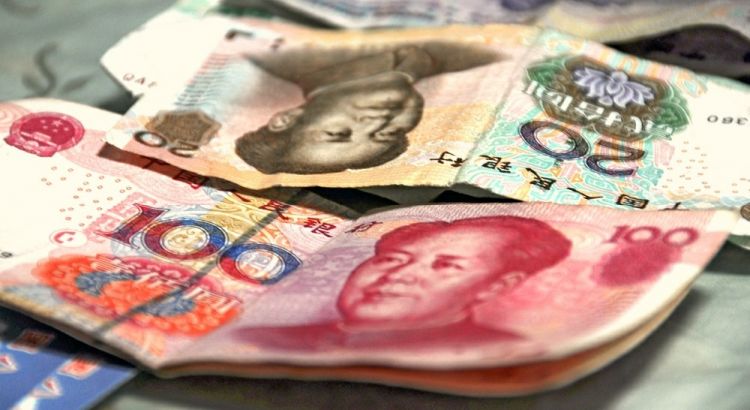America’s hard-power buildup may provoke rather than deter China’s sustained push into the South China Sea; post-Cold War political realities require a far more nuanced response.
You gotta play hard to win: at least, that is China’s philosophy when it comes to military expansion in the Pacific. Unfortunately, it is also one that the United States has adopted in recent years. Over the past decade, the People’s Republic of China (PRC) has been hard at work creating a sphere of influence around itself to assert its territorial integrity from foreign powers.
In order to establish this sphere of influence, China has gone so far as to build artificial islands in disputed South China Sea waters for basing military troops and equipment. While the United States has attempted to remain vocally neutral in the South China Sea disputes, it has nevertheless embarked on a global pivot to the East, sending troops, planes, and naval war craft to the region to counter Chinese advancement. Some analysts criticize this Pacific buildup as a waste of US resources, while others denounce it as insufficient to curb the PRC’s push towards regional dominance.
While the United States should recognize that it cannot afford to lose its entire strategic hold in the Pacific, it must also come to terms with the reality of an emerging multi-polar world in the region, the financial costs of its military activity, and the possibility of provoking an arms race with China. Ultimately, to secure its interests, the US must shift its strategic focus from buildup to international cooperation and strategic deterrence.
A Crouching Tiger
For more than 20 years, China has engaged in a sustained effort to transform its military, the People’s Liberation Army (PLA), from a low-tech, infantry-based force to a high-tech, networked force focused on naval and air power.1 Between 2005 and 2014, it increased its military spending at an average rate of 9.5% per year, which enabled the PLA to make rapid advancements in its capabilities and strategic reach.1 Currently, with the second-largest defense budget in the world ($136 billion), the Chinese military boasts over 1.25 million soldiers, 1,200 short-range ballistic missiles (SRBMs), 62 nuclear and diesel-electric powered submarines, multiple fourth generation fighter jets (with 2 fifth-generation models in development), and impressive space and cyber capabilities.2, 1, 3 Under the leadership of Xi Jinping and previous Chinese presidents, the PLA has improved its capabilities in every domain of warfare and is well on its way to becoming a modern and regionally dominant military power.1
This impressive military buildup coincides with China’s long-term geopolitical goals. China sees its ultimate return to global prominence as inevitable, based on its modern history as a global leader in areas such as trade, finance, and industrial production. How it intends to reach that stage of global prominence is simple: embrace multi-polarity while supporting the principle of state sovereignty.4 In practice, this means that China acknowledges the existence of other global powers (such as the United States) and their own ”spheres of influence,” while simultaneously developing its own virtually impenetrable sphere of influence around itself.4 By promoting its own territorial integrity and deterring foreign military presences, China hopes to build up military, political, and economic capital sufficient for future expansion and ever-increasing dominance.
Extending the Claws: China’s Designs
Looking at recent developments in the Asian-Pacific, it is clear that China seeks to apply this broad strategy in the South China Sea. Over 1.4 million square miles in size, the South China Sea constitutes a semi-enclosed area bordered by China and several small and militarily weak Southeast Asian powers such as Brunei, Vietnam, and the Philippines.5 , 6 For almost 30 years, the “littoral countries” located around the South China Sea have been locked in competition over the rights to the reefs and islets that dot the ocean. It is not very difficult to see why, because the South China Sea is rich in natural resources, carries over $5 trillion in yearly trade, and is an excellent strategic position in the Asia-Pacific.7
Driven by these incentives, Southeast Asia’s combined military expenditures rose by 44 percent between 2005 and 2014, reaching $35.9 billion in 2014. One specific example is Vietnam, whose territorial claims overlap greatly with China’s; from 2005 to 2014, Vietnam increased its defense spending by 128 percent, and by 9.6 percent in 2014 alone.8
China, the largest and most powerful of the littoral states, believes that it possesses full sovereignty over most of the contested waters, and that its consolidation of its claims contributes to its territorial integrity and sovereignty.6 This belief is based in part on an aged official Chinese map featuring a nine-dash line that extends as far south as the northern Malaysian and Bruneian coasts.9 While this nine-dash map is certainly questionable as an authoritative source, China’s use of it to justify expansion has caused it to bump repeatedly against international treaties and the Association of Southeast Asian Countries (ASEAN).8 Since 2009, China has dramatically increased naval and air patrols in the region and has intimidated foreign companies attempting to operate in the South China Sea. These patrols have violated other states’ internationally-recognized Exclusive Economic Zones (or EEZs) multiple times.6
The PLA has also built artificial islands and used existing ones to base military installations and equipment in contested regions. On 18 February of this year, for example, the PLA placed two
HQ-9 surface-to-air missile batteries on an island in the middle of the heavily-disputed Paracel Island Chain.10 Even in the face of sustained military buildup on the part of neighboring states (and, as will be discussed below, the United States), China has adapted to pressures and is continuing to press forward.
Over time, China’s focus has shifted from maintaining coastal security to denying foreign navies access to both the South China Sea and the first chain of islands surrounding it.6 It has three primary reasons for doing so. First, by dominating these seas, China can extend its security perimeter in accordance with its long-term vision. Second, China hopes to reinforce its influence over crucial trade routes and secure its lengthy maritime trade routes and energy supply lines from the Middle East. Finally, so long as the Chinese military is unable to push back US Naval presence (particularly the US 7th Fleet), China remains incapable of reuniting with Taiwan, which it considers part of its sovereign territory.11, 6 The PRC’s current strategy is engineered to achieve these ultimate ends.
Through rapid modernization of its military and a fervent desire to uphold its sovereignty, China has made it increasingly difficult to maintain the old status quo, in which countries such as the United States are able to quickly and accurately respond to global threats in the region.
Not on Our Watch? American Military Buildup in the Pacific
It was China’s assertive behavior in the South China Sea and its potential effects on our security, allies, and trade that first caused the United States to begin a costly military buildup in the Asia-Pacific. Prior to 2011, the increasing complexity of the region was met by an American lack of strategic focus, even while many regional powers desired the US’s leadership over China’s.12 In 2011, however, President Barack Obama in an address to the Australian parliament announced a re-balancing, or “pivot,” of US resources and focus towards the Asia-Pacific.13 Officially, this re-balancing was driven by a broad agenda that went beyond security alone, placing diplomacy, trade, development, and values under its umbrella.12 Unofficially, however, the government intended the re-balancing to represent a strategic response to China’s military buildup, which threatens US capabilities in all these areas.
The central military components of the President’s re-balancing include a shift in US military assets to the Asia-Pacific, an increase in foreign military training programs and US defense exports, more frequent US warship visits, the extension of defense ties, and the expansion of joint military exercises.14 On bases on Guam, Okinawa, Hawaii, and elsewhere, the US intends accumulate an fighting force capable of competing with China in the region. By 2020, the pivot is planned to shift 60% of all Navy vessels; forward-deploy over 2,500 marines; and allocate 60% of its overseas-based fighters, tactical aircraft, and bombers to the Pacific theater.14 As of this year, United States Pacific Command oversees 360,000 military and civilian personnel, 5 aircraft carrier strike groups, over 1,200 aircraft, more than two dozen submarines, and at least 200 warships.15 While the US is not engaged in a regional conflict, the military frequently makes use of this fighting force by conducting over 170 military exercises and 250 port visits in the Asia-Pacific region annually.14 These various components of the Asian pivot represent a massive investment in military power—hundreds of billions of dollars—and are a clear sign that America takes Chinese modernization and expansion seriously.16
Gung Ho or No-Go?
Analysts are bitterly divided over whether this American buildup of military is necessary or detrimental to US interests. On the one hand, America’s future demands that attention be paid to the Asia-Pacific region.12 Economic and technological improvements in the East mean that America can no longer afford to inadequately respond to China-sized regional developments. China has the ability to greatly influence the regional landscape, something the US should not ignore.4 Unhindered, China could theoretically close off a strategically valuable expanse of ocean, assert uncomfortable levels of authority over US allies in the region, and restrict a $1.2 trillion per year shipping lane. Such maneuvers, though unlikely, could prove a strategic disaster for the United States.17 For the time being, America easily outstrips Chinese military technology; in the future, however, this military dominance may not be so easy to affirm. To prevent the maintenance and strengthening of the Chinese sphere of influence, America must have incredibly powerful anti-defense technology (preferably submarines) and at least some deterrent force. Currently, the US buildup has provided both of these, making it difficult for China to achieve its geopolitical aspirations.18
On the other hand, the Pacific build-up on its current scale may not be as justified as the American government portrays it to be. In the first place, the costs of the Pacific military forces have been enormous. With the country facing economic difficulties and the emergence and re-emergence of other global threats (Russia, Iran, ISIS, etc.), the billions spent in Asia may well be unjustified or, at the least, excessive. As international affairs professor Evgeny Kanaev put it, “the US is facing too serious financial constraints to strengthen and even maintain its presence in Asia-Pacific.”19 Even as top government officials promise that budgetary cuts will not effect the Asia-Pacific, many analysts wonder whether other crucial responsibilities might outweigh America’s drive to counter China’s stealthy, tiger-like aggression.20
A More Political Than Physical Threat
In addition, many analysts contend that the rise of China poses a smaller threat to US national security than American leaders imagine. Their argument goes that it is US hegemony, rather than US security, that is at stake. The US, with a defense budget 5 times that of China, is already complemented by allies who surround China—Japan, South Korea and Taiwan—and a global network of military bases.14 The US also has far superior nuclear-war-fighting capacity than does China, giving it a significant advantage in conflict. Also, America’s foot remains on China’s throat, able at any time to choke off the resources and products necessary for Chinese industry and ultimately the PRC’s survival.14 This means that though China may be modernizing, economically and militarily, the US is not in much danger of losing a conflict—at least, not for the foreseeable future. Also, as the ASEAN countries surrounding the South China Sea develop their own militaries (think Vietnam), their need to rely on US protection guarantees lessens.19 In whole, then, it is less a matter of endangered national security as it is one of endangered regional dominance.
Also, while China may not pose a massive national security threat, America’s rapid Pacific buildup may well be setting the stage for a dangerous arms race in the South China Sea region. According to Admiral Scott Swift, America’s top military commander for the Pacific, the US could be seeing the “leading edge of a return of ‘might makes right’ to the region [the South China Sea].”21 In essence, the more troops and equipment the US and other countries send to the South China Sea and the regions around it (Japan, the Mariana Islands, the Philippines, etc.), the more China will send. The forces prepared by China may be of a lesser quality than those of other countries, but the steadily increasing military presence in the region will inevitably enhance the probability of incidents and clashes occurring.22
Avoiding an Arms Race
In the end, the Pacific military buildup has done much to check the growth and aggressive behavior of China. The deterrence provided by the military and the ocean patrols near China’s man-made islands have indeed worked to reduce Chinese advancement to incremental steps in the Pacific.23 At the same time, America’s current tactic of constant buildup and counter-aggression is not optimal if the US means to be realistic about its goals. To simply slow, not reverse, the growth of a determined
China—a nation that has, in the words of Evgeny Kanaev, “invested too many resources to let the US join the game”19 —is only to move one step forward and two steps back. Simply increasing US military spending overseas will not solve this problem, and as discussed above, may actually drive the region closer to conflict. Furthermore, the buildup drains billions of dollars that might be better spent in regions such as the Baltic States (to counter Russian advancement) and the Middle East (to halt the rampages of ISIS). Dominance in the Pacific region is important, but America must inevitably confront the question: what is it willing to sacrifice to obtain it?
Conclusion
The difficulties with China and the South China Sea are incredibly complex, and no blanket policy solution exists that will eliminate all obstacles to the US government’s geopolitical goals. The US should start, however, with accepting the fundamental paradigm shift from the
post-Cold War decades to today. As
China contends, the Asian-Pacific world is no longer a unipolar one; it exists in an increasingly multipolar environment with powers like China, Malaysia, Vietnam, Japan, and the United Stated all vying for influence. The United States must accept that its influence will naturally decrease in this competitive system.
Next, the United States should gradually halt the Pacific buildup in its current form. This does not mean that the United States should pull out of the region entirely or let China have unimpeded influence over regional states and trade routes. That would be pure folly. It simply means taking advantage of new partnerships, technologies, and operations in the region, so that resources can be dedicated to other global threats.24
As discussed above, the US already possesses the ability to place economic and military chokeholds on Chinese aggression, both with its submarine force and its land- and air-based nuclear arsenals; this nuclear advantage is not going to evaporate any time soon.14 As a result, the US can afford to emphasize building relationships with other nations, such as Japan and Brunei, working with them to both establish treaties and Codes of Conduct (COCs) that can stand the pressures of China and give them military training.24
The US can also afford to make spending cuts in the region. Allowing the Pacific region to take some of the $487 billion in planned military budget cuts over the next decade would free up resources useful for maintaining strategic US troop presence in Europe and the Middle East.24
The situation in the East is a monumental one and cannot be solved overnight by sweeping pieces of legislation. It is by accepting the paradigm shift of a multipolar system in the South China Sea, and re-focusing its strategic, financial, and military energies towards cooperation, negotiation, and crucial deterrence, that the US can best respond to the shifting environment in the region. Delaying too long to recognize the limitations of the Pacific buildup is an unacceptable option. The US must act—or in the future be outstripped strategically by the Eastern tiger. ■
- Ian Rineheart, “The Chinese Military: Overview and Issues for Congress,” Congressional Research Service, 18 September 2015, https://www.fas.org/sgp/crs/row/R44196.pdf.
- “World’s Largest Armies,” Globalsecurity.org, February 2016, http://www.globalsecurity.org/military/world/armies.htm.
- Zachary Keck, “China’s Air Force Modernization: ‘Unprecedented in History,’” Diplomat, 6 June 2014, http://thediplomat.com/2014/06/chinas-air-force-modernization-unprecedented-in-history/.
- Daniel Wagner, “China Needs to Decide What It Wants to Be,” Huffington Post, 15 March 2015, http://www.huffingtonpost.com/daniel-wagner/china-needs-to-decide-wha_b_4590785.html.
- Eugene LaFond, “South China Sea,” the Encyclopedia Britannica, http://www.britannica.com/place/South-China-Sea.
- “Examining the South China Sea Disputes,” Center for Strategic and International Studies, September 2015, http://csis.org/files/publication/151110_Hiebert_ExaminingSouthChinaSea_Web.pdf.
- Piin-Fen Kok, “A Military Game of Chicken in the South China Sea,” Diplomat, 28 August 2015, http://thediplomat.com/2015/08/a-military-game-of-chicken-in-the-south-china-sea/.
- Dean Cheng, “How China Views the South China Sea: As Sovereign Territory,” Heritage Foundation, 5 November 2015, http://www.heritage.org/research/commentary/2015/10/how-china-views-the-south-china-sea.
- Marc Lanteigne, Chinese Foreign Policy: An Introduction (New York: Routledge, 2009), 121.
- “In the South China Sea, the US Stays the Course,” Stratfor.com, 18 February 2016, https://www.stratfor.com/geopolitical-diary/south-china-sea-us-stays-course?topics=279.
- “China Reshapes Military Spending for S. China Sea,” the Maritime Executive, 2 February 2015, http://www.maritime-executive.com/article/china-reshapes-military-spending-for-south-china-sea.
- Kurt Campbell and Brian Andrews, “Explaining the US ‘Pivot’ to Asia,” Chatham House, August 2013, https://www.chathamhouse.org/sites/files/chathamhouse/public/Research/Americas/0813pp_pivottoasia.pdf.
- Kenneth Lieberthal, “The American Pivot to Asia: Why President Obama’s Turn to the East is Easier Said than Done,” foreignpolicy.com, 21 December, 2011, http://foreignpolicy.com/2011/12/21/the-american-pivot-to-asia/.
- Vince Scappatura, “The US ‘Pivot to Asia’: the China Specter and the Australian-American Alliance,” the Asia Pacific Journal (11.36 No. 3), 10 September 2014, http://www.globalresearch.ca/the-us-pivot-to-asia-the-china-specter-and-the-australian-american-alliance/5400406.
- “DoD Focus on Asia-Pacific Rebalance,” defense.gov, 2016, http://www.defense.gov/News/Special-Reports/0415_Asia-Pacific-Rebalance.
- Adam Ashton, “With Wary Eye on China, US Military Reconfigures Pacific War Machine,” the News Tribune, 21 November, 2015, http://www.thenewstribune.com/news/local/military/article45784360.html.
- Clay Dillow, “How China’s Military and Naval Buildup in South China Sea Threatens the US,” cnbc.com, 13 October 2015, http://www.cnbc.com/2015/10/12/chinas-military-and-naval-buildup-in-south-china-sea-threatens-the-us.html.
- “China: Closing the Gap in Anti-Submarine Warfare,” stratfor.com, 20 July 2015, https://www.stratfor.com/analysis/china-closing-gap-anti-submarine-warfare.
- Evgeny Kanaev, “China and US’ Approaches to the South China Sea Issue: Changing Patterns and Strategic Implications,” Russian Academy of Sciences: Institute of Oriental Studies, 2014, https://www.hse.ru/pubs/share/direct/document/122383046.
- “Panetta Answers Troops’ Questions in Japan,” US Department of Defense. 24 October 2011. http://www.defense.gov/news/newsarticle.aspx?id=65786.
- Philip Sherwell, “America Sounds ‘Arms Race’ Alert over South China Sea amid Fears of Military Conflict,” the Telegraph, 15 December 2015, http://www.telegraph.co.uk/news/worldnews/asia/china/12051646/America-sounds-arms-race-alert-over-South-China-Sea-amid-fears-of-military-conflict.html.
- Clive Schofield, “An Arms Race in the South China Sea?” IBRU Boundary and Security Bulletin, 1994, https://webcache.googleusercontent.com/search?q=cache:iHrNb2t4DU8J:https://www.dur.ac.uk/ibru/publications/download/%3Fid%3D39+&cd=3&hl=en&ct=clnk&gl=us&client=safari.
- Robert Kaplan, “Eurasia’s Coming Anarchy: the Risks of Chinese and Russian Weakness,” Foreign Affairs, April 2016, https://www.foreignaffairs.com/articles/china/2016-02-15/eurasias-coming-anarchy.
- Michael Green, “Rethinking U.S. Military Presence in Asia and the Pacific,” Center for Strategic and International Studies, 2012, http://csis.org/files/publication/120413_gf_green.pdf.
© Japan Times (http://japantimes.co.jp)





